Croatian Coat of Arms from 15-16th ct. in Croatia, Austria, Czechia, Germany, Hungary, Italy, Sweden
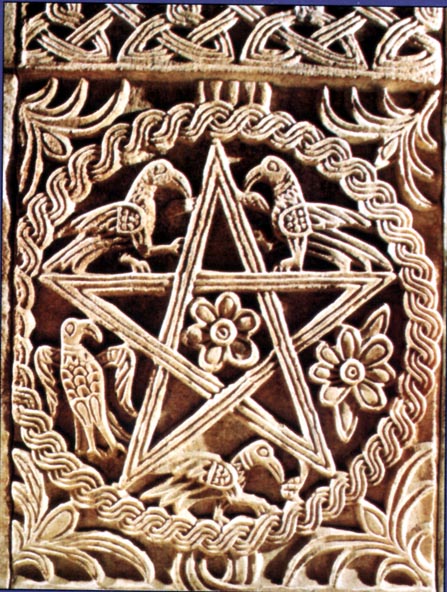
Stone Choir Screen Panel, Split, 11th century,
probably Croatian coats of arms on wings of three falcons,
(information by Adam Eterovic, USA; see also [Grakalic, p. 32])
Croatian Coat of Arms is among the oldest national symbols in Europe. It can be encountered already since the 15th century in numerous European countries. By Croatian Coat of Arms here we mean the well known red-silver square pattern, by which Croatia is universally recognizable.
Rather amazing Croatian Coats of Arms can be seen for example in the Prague Cathedral of St Vitus, on the mount of Hradèany, in the Republic of Czechia, dating from the first half of the 16th century. See near the bottom of this web page.
However, there are also some other Croatian Coats of Arms, like that of Dalmatia, Slavonia (regions which for centuries belonged to United Kingdom of Croatia, Slavonia and Dalmatia), and Rama in contemporary Bosnia and Herzegovina.
|
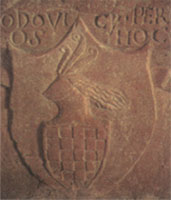
Croatian coat of arms in The Senj Cathedral, 1491,
which belonged to the family of Perovich in Lika, mentioned in the accompaning Latin text
(at that time the Turkish Empire is near immediate vicinity of the towns of Senj, Karlovac and Sisak).
Note that this Croatian Coat of Arms appeared one year before the discovery of America.
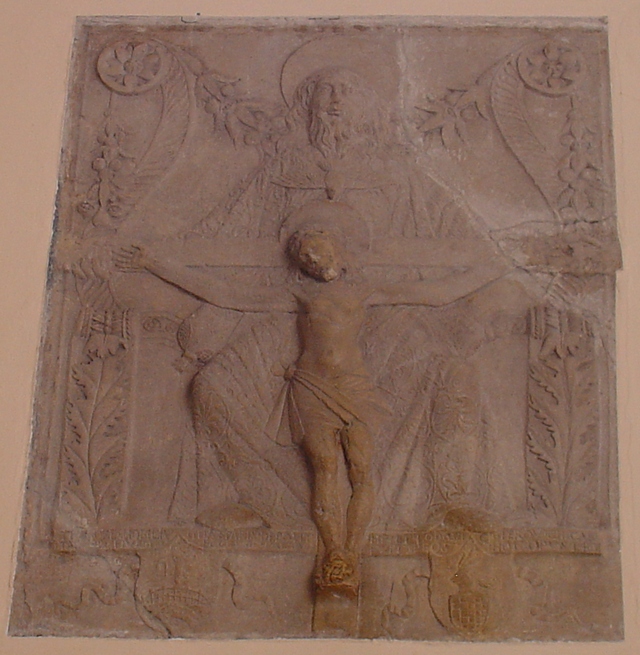

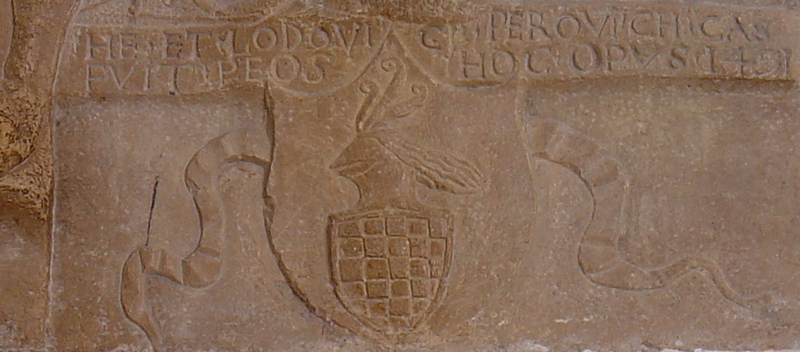
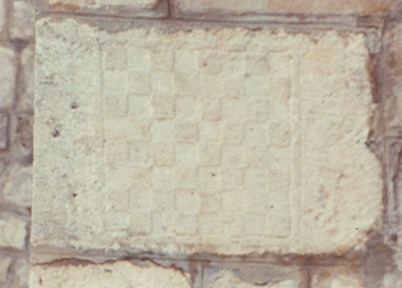
Croatian coat of arms, not later than 1494,
and probably much older (a remain of an unknown church),
Church of St. Lucija, Jurandvor near Baska, island of Krk
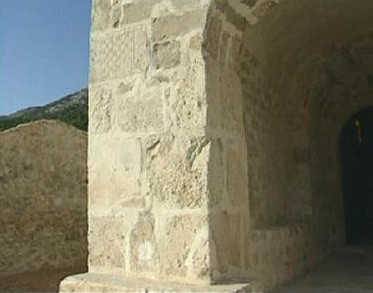
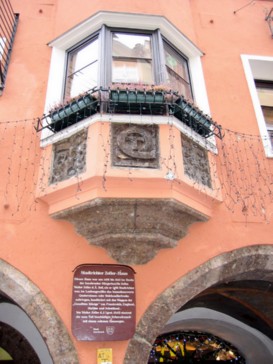
Croatian coats of arms can be seen on the ceiling of the Stadtrichter Zeller Haus (Herzog Friedrichstr. 35)
of the city magistrate (Stadtrichter) in Innsbruck, Austria, dating from 1495/96.
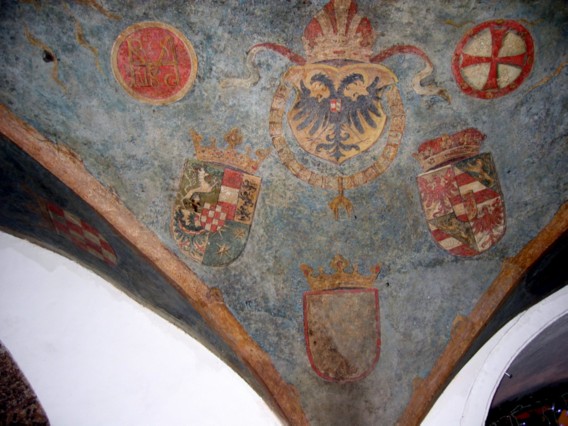
Another Croatian coat of arms from 1499 was in former Wappenturm,
in Hofburg - the Imperial Palace in Innsbruck, Austria.
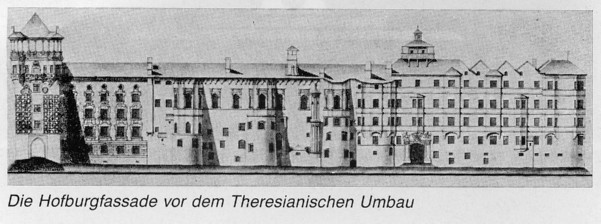
Wappenturm (i.e. the Coat of Arms Tower) of Hofburg is on the left on the above photo.
Unfortunately, since the 1770 renovation the Wappenturm was changed:
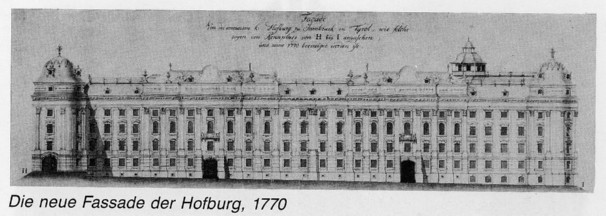
Luckily, the 18th century painting of the old Wappenturm has been made for the Hofburg sacristy,
where Croatian coat of arms can still be seen:
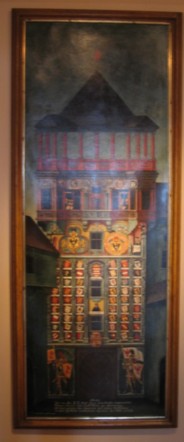
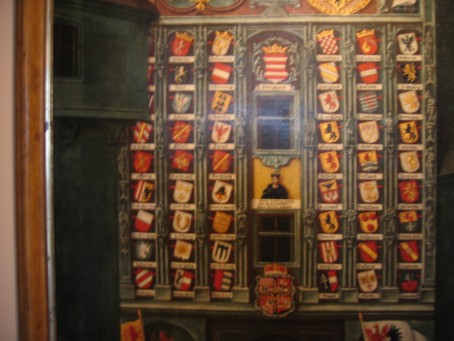
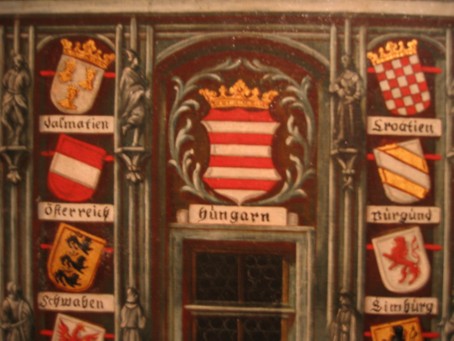
See also Ramski Zbornik, Zagreb, 2001.
Many thanks to Ivan and Aleksandar Szabo for kind help.
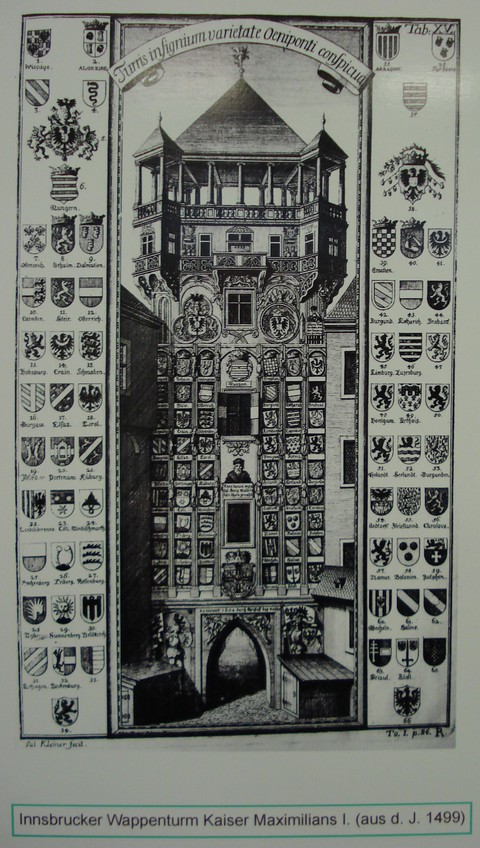
How the original Wappenturm of King Maximilain I looked like.
By the courtesy of Josip Sersic and Mijo Juric, Vienna, 2009.
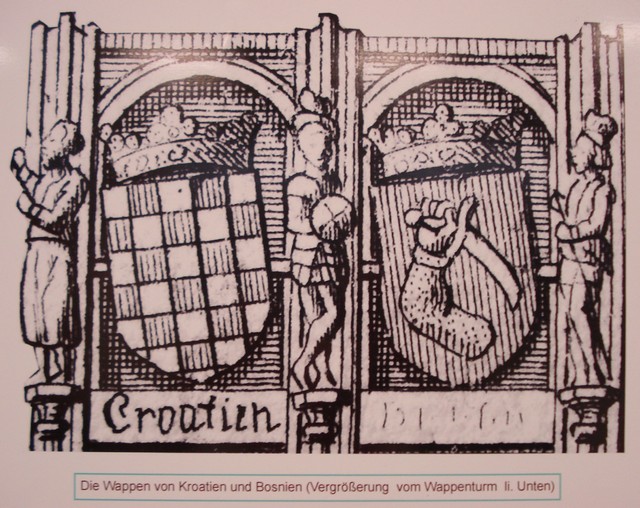
Croatian and Bosnian Coat of Arms on teh Wappenturm in Insbruck, 1499.
By the courtesy of Josip Sersic and Mijo Juric, Vienna, 2009.
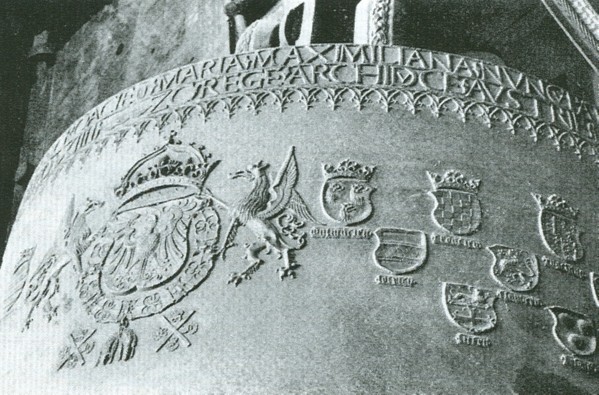
From the bell in Schwaz near Innsbruck, 1503,
diameter 189 cm, weight 4.2 tons, 60 coats of arms in three lines
Dalmatian and Croatian coats of arms occupy the first two places in the first line (!)
(Ivan Bosilj: Zvona, Graphis, Zagreb, 2000, p. 53; with permission of prof.dr. Zvonko Bencic)
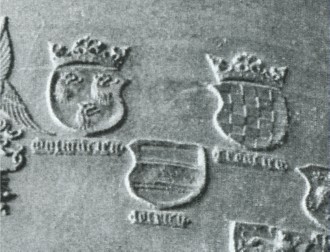
Dalmatie and Croacie on the top, from a bell in Schwaz near Innsbruck, Austria, 1503
In the church of Sainte-Waudru in Monsu, Belgium, there is a Croatian Coat of Arms dating from 1511, see [Claus]
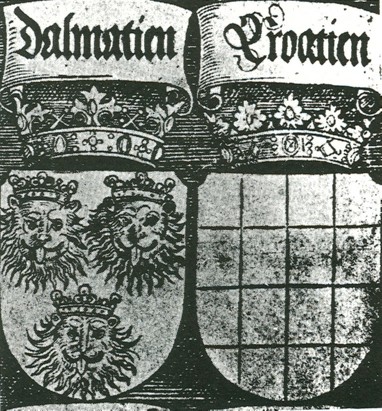
Croatian coats of arms (Dalmatien, Croatien) drawn by Albercht Dürer (1427-1528),
kept in Albertina (a famous graphic art collection) in Vienna
Since his election in 1519 Charles V predominantly used the following title in official documents:
"Carl der fünffte, von Gottes Gnaden Römischer Kayser, zu allen Zeiten Mehrer des Reichs, König in Germanien, zu Castilien, Aragon, Leon, beyder Sicilien, Hierusalem, Hungarn, Dalmatien, Croatien, Navarra, Granaten, Tolleten, Valentz, Gallicien, Majorca, Hispalis, Sardinien, Corduba, Corsica, Murcien, Giennis, Algarbien, Algeziren, Gibraltar, der Canarischen und Indianischen Insulen und der Terrae firmae des Oceanischen Meeres etc, Ertz-Hertzog zu Oesterreich, Hertzog zu Burgundi, zu Lotterich, zu Braband, zu Steyer, zu Kerndten, zu Krain, zu Limburg, zu Lützenburg, zu Geldern, zu Calabrien, zu Athen, zu Neopatrien und Würtenberg etc."
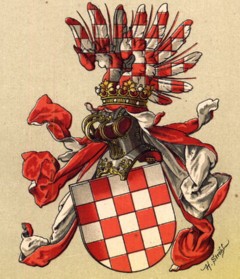
Kingdom of Croatia (Austrian-Hungarian Imperial civic heraldry)
photo from www.ngw.nl/int/oos/ooshong/croatia.htm

The artist Hans Burgkmair (1473-1531) included Croatian and Dalmatian coats of arms
in his painting of King (Ludovik I) Louis (1516-1526) and in his genealogy of the Habsburgs.
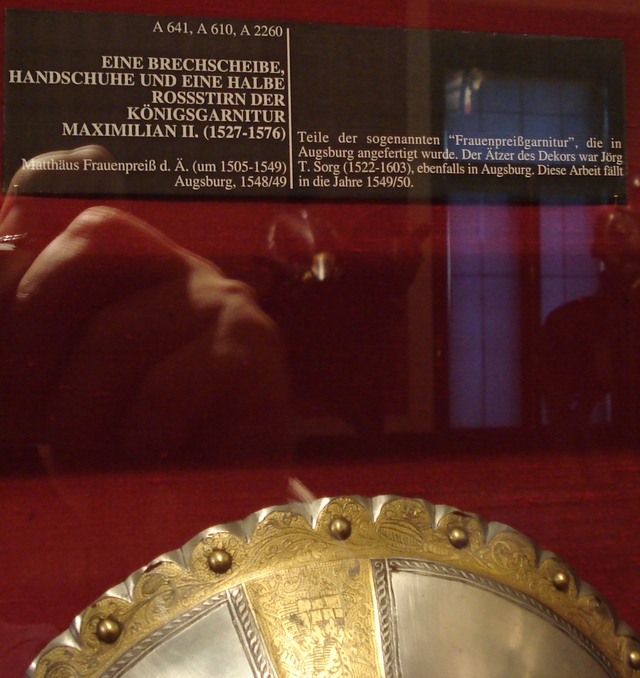
A glass by King Maximilian II (1527-1576), a part of "Frauenpreissgarnitur", with Croatian Coat of Arms,
kept within the permanent exhibition in the Neue Hoffburg Royal Palace in Vienna.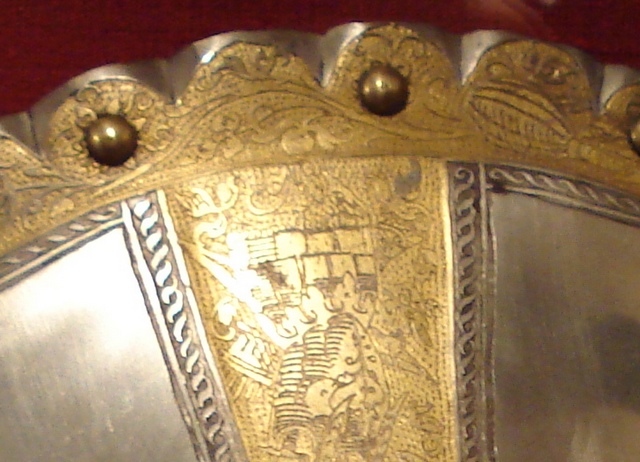
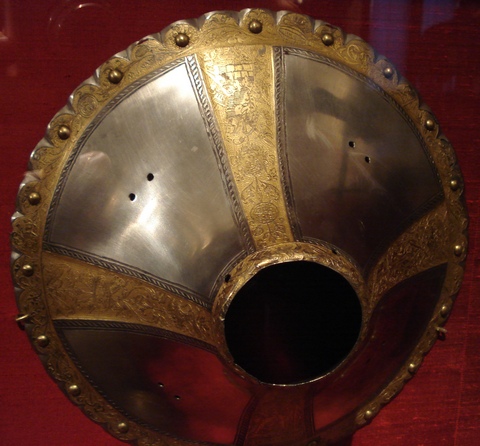
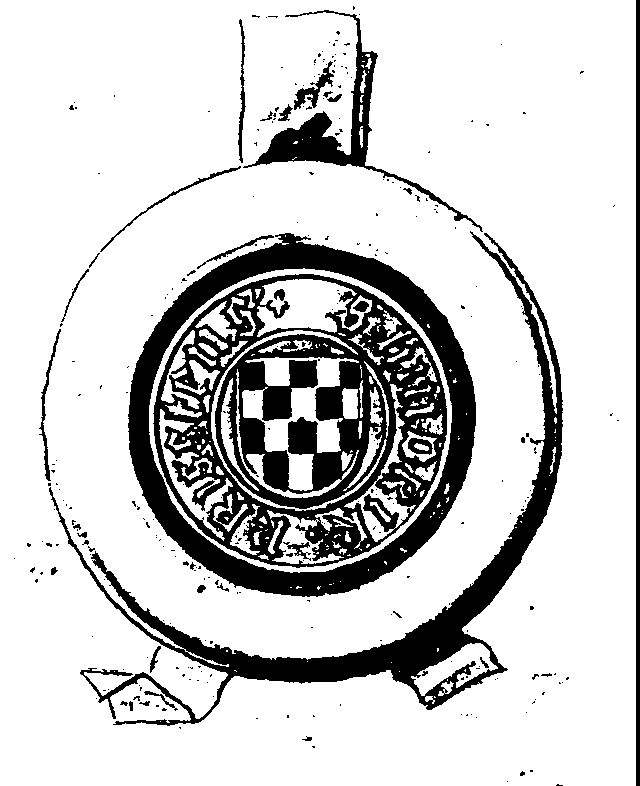
The coat of arms owned by the Swedish noble family Kristiernsson from Östergötland in Sweden. During the fifteenth century, this family served the Scandinavian king Erik VII of Pomerania and his governor in Östergötland, count Ivan VI. An¾ Frankopan (in Sweden known as Johan Franke or Johan Vale). The central part of Kristiernsson’s seal corresponds to the traditional chequered Croatian coat of arms, known since the eleventh century.
During the king Erik of Pomerania’s travel through Croatia on his way to the Holy Land, his followers and king’s shield-bearer Hindrik Kristiernsson made a longer break in Frankopan’s city of Senj. The coat of arms very similar to that of Kristiernsson’s, belonged to the noble family Peroviæ from Senj. For more details see dr. Mladen Ibler (Denmark):
THE CROATIAN COAT OF ARMS - FROM FRANKOPAN´S SENJ TO SWEDEN?
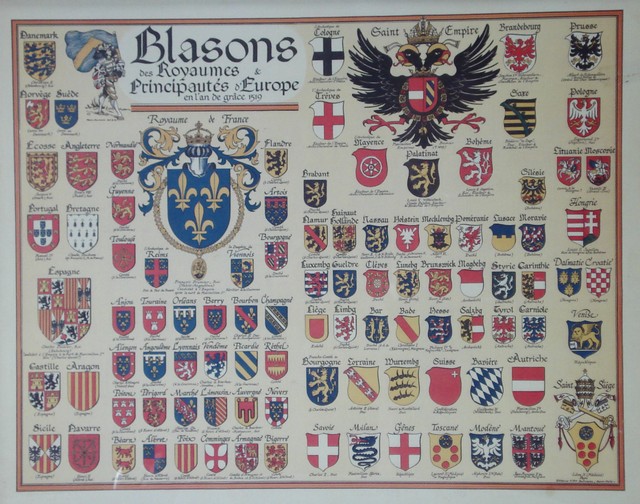
Blasons des Royaumes & Principautés d'Europe en l'an de grâce 1519. Croatian coat of arms on the right-most column, third from the bottom.

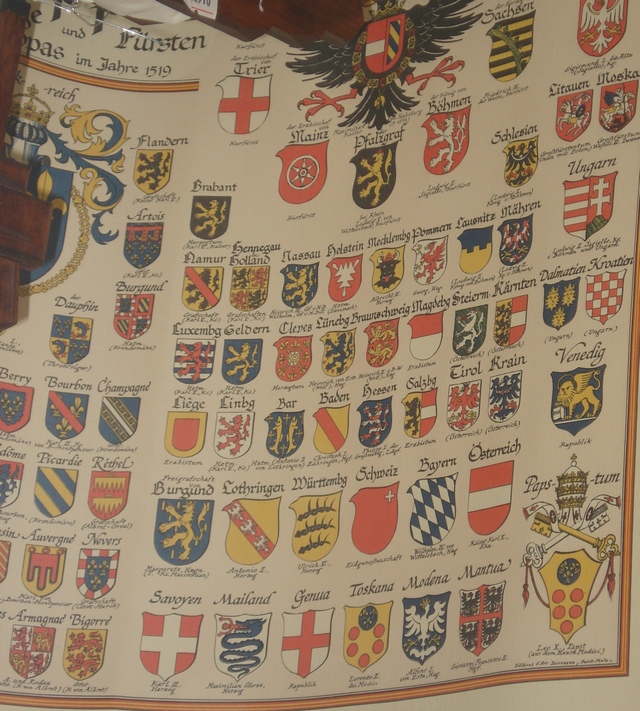
The same map as above, but in German. Croatian Kingdom is also represented.
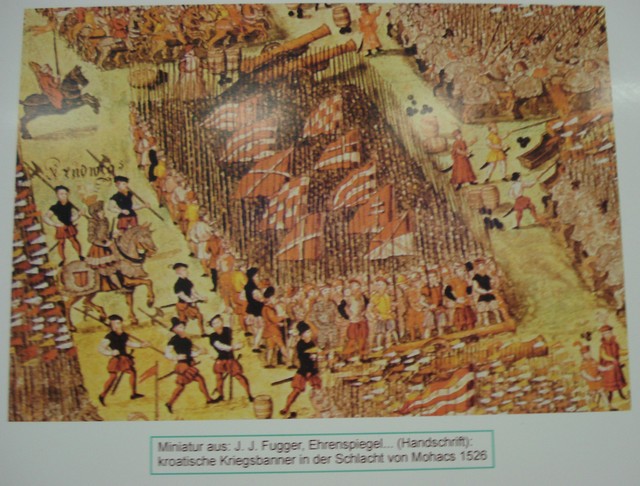
Two clearly visible Croatian Coats of Arms of Croatian troups at the 1526 battle at the Mohac field (Hungary) against the Turks (the second flag in the left column and the fourth flag in the right column). By the courtesy of Josip Sersic and Mijo Juric, Vienna, 2009.
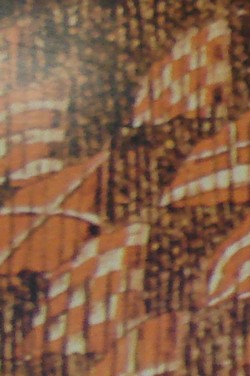
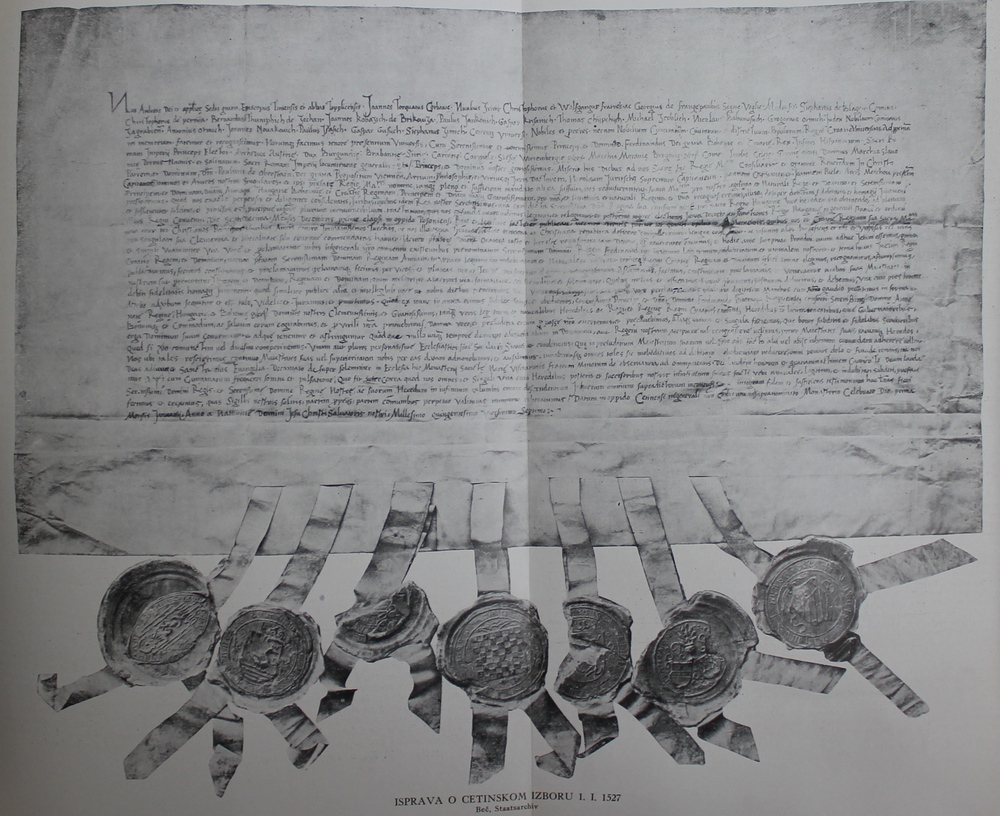
January 1st, 1527, Croatian legal document kept in the State Archive in Vienna (Staatsarchiv), with the first known official appearance of Croatian Coat of Arms.
Source Croatian Encyclopaedia (see under Cetingrad)
Text in original Latin and in Croatian translation.
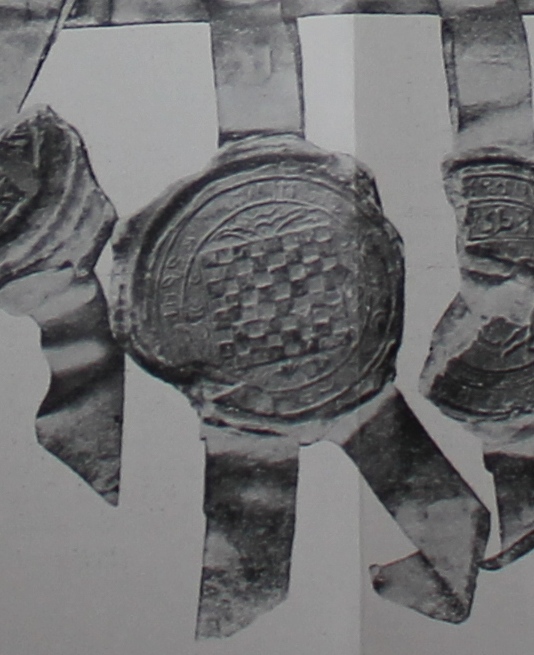
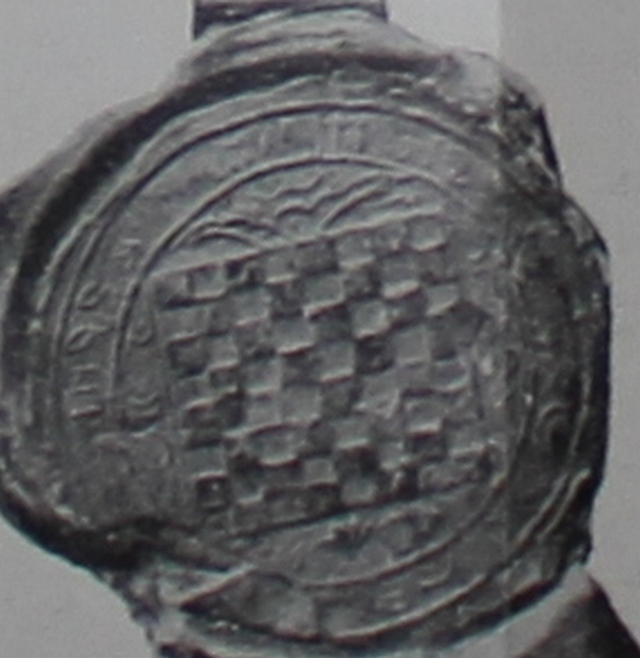
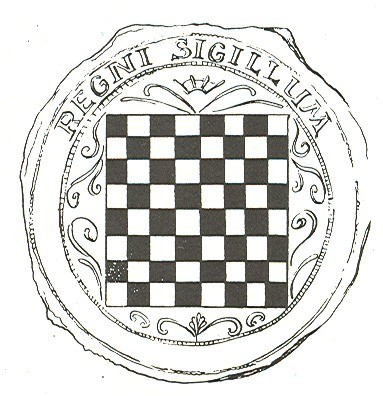
Sigillum regni with Croatian coat of arms, Cetingrad 1527
In Vienna there are old Croatian coats of arms on several places,
on the Grabe square (around 1760) , and in Schönbrun
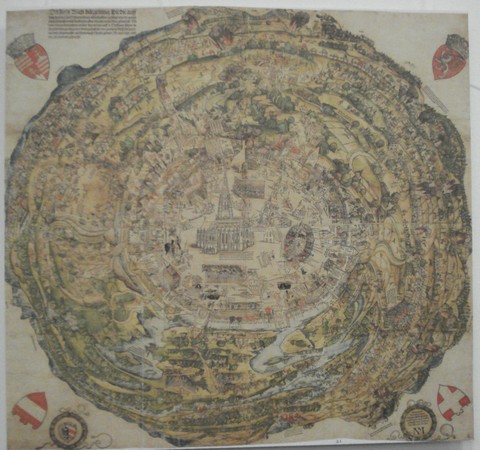
Vienna in 1529, during the first Turkish siege of the city. Stephanusdome, the famous Vienna Cathedral, is in the center.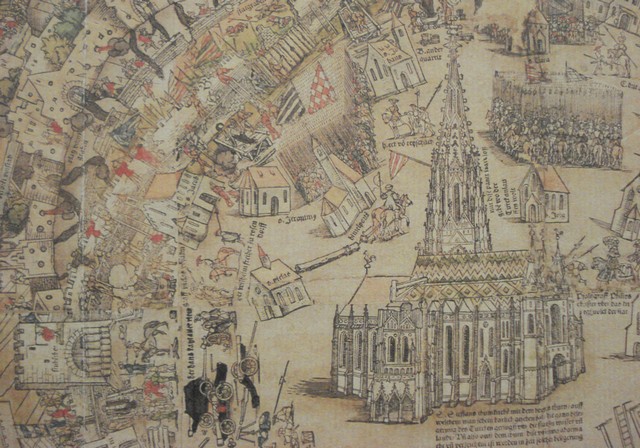
A detail from the above map: Croatian Coat of Arms is in the middle top, to the left of the Cathedral.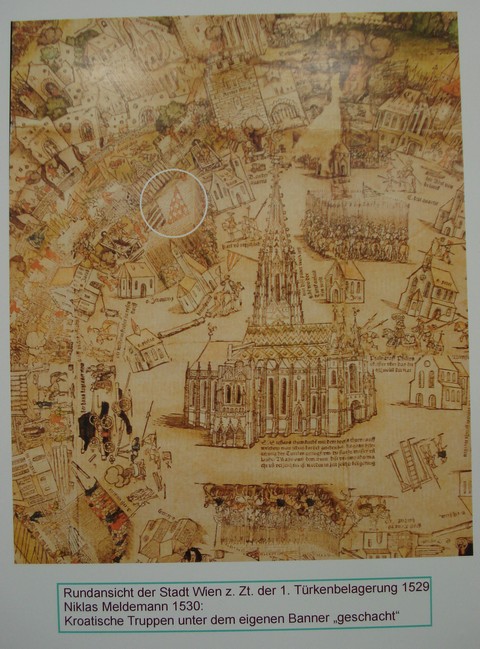
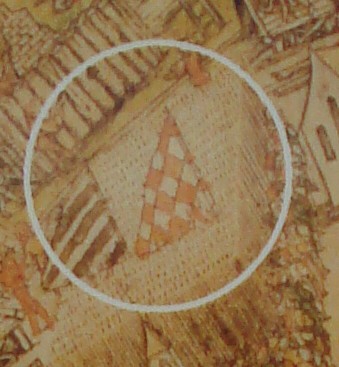
Croatian defensive forces under their Croatian flag in Vienna in 1529, during the first Turkish siege of the city.
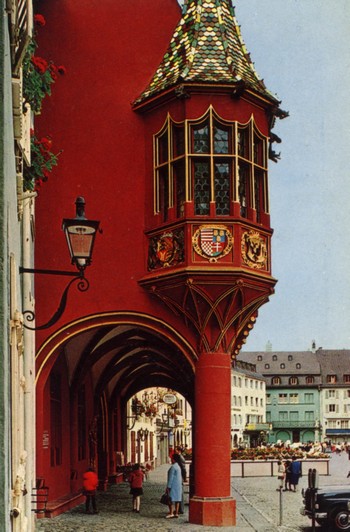
A picture postcard from Freiburg im Breisgau, Württemberg, Germany
(Münsterplatz 24, 79098 Freiburg)
The decorations of the building are from 1530-32.
Description on the reverse side of the postcard:
(in German) Erker des historischen Kaufhauses am Müsterplatz,
(in English) Bay of the former „Kaufhaus“ at the Muenster Square,
(in French) Pièce avancée de l'ancien „Kaufhaus“ sur la Place de la cathédrale
(many thanks to Mr Vlatko Bilic, Zagreb)
In the church of Sainte Michel in Bruxelles, Belgium, there is a Croatian Coat of Arms dating from 1538, see [Claus]. According Jean-Pierre Claus, Belgium has about 40 (fourty) various old Croatian Coats of Arms throughout this country (from Istria, Rijeka, Dubrovnik, Ilok, etc.), mostly of exceptional beauty!
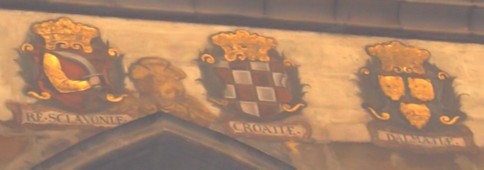
16th century Croatian coats of arms in the Cathedral of St Vitus in Hradcany, Prague, Czechia:
Regnum Sclavoniae, Croatiae, Dalmatiae, on the left from the main altar.
They appear together with several dozens of other old European coats of arms.
These drawings seem to be unknown in Croatian heraldic literature.
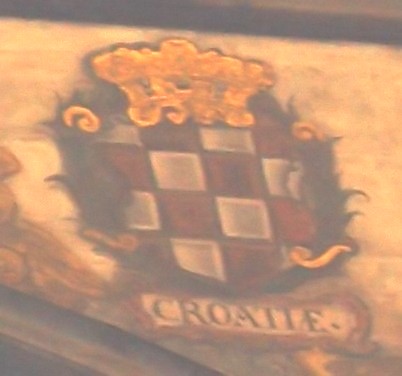
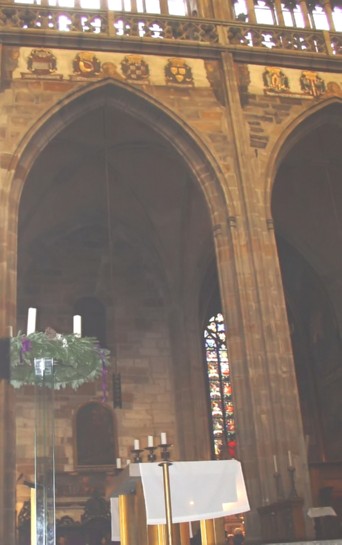
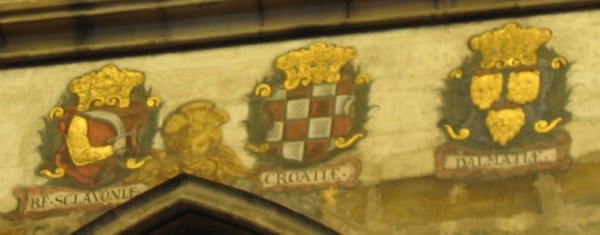
Re. Sclavoniae, Croatiae, Dalmatiae (Kingdom of Slavonia, Croatia, and Dalmatia)
Note that here the coat of arms of Sclavonia is the same as that of Bosnia.
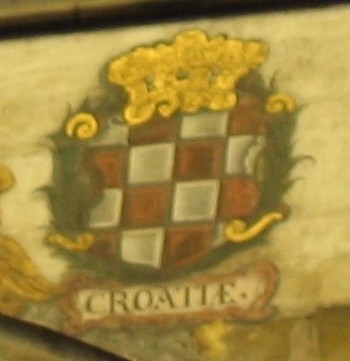
For very interesting traces of Croatian Glagolitic Script in Prague see here (in Croatian)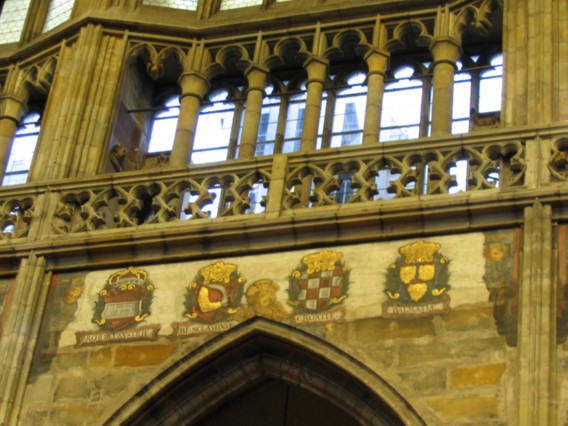
See also Moravian coat of arms in contemporary Czechia:
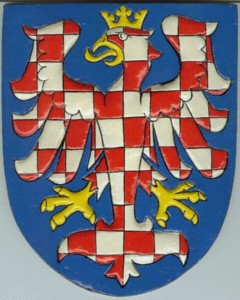
The Moravian coat of arms (Moravia is a region of Czechia, capital - Brno)
is obviously related to Croatian coat of arms.
See some basic facts about the White Croats, which seem to indicate the connection.
Moravian coat of arms is a part of the contemporary coat of arms of the Czech Republic:
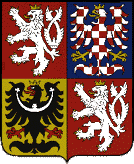

Under the roof of Hungarian Parliament in Budapest there are several coat of arms,
among them also Croatian.

Amblem of Confraternity of St. Jerome in Rome from 1585,
with coats of arms of Dalmatia and Croatia on the top, and Slavonia and Bosnia at the bottom
Source and more information: Croatian Coat of Arms
Formated for CROWN by Darko ®ubriniæ
Distributed by www.Croatia.org . This message is intended for Croatian Associations/Institutions and their Friends in Croatia and in the World. The opinions/articles expressed on this list do not reflect personal opinions of the moderator. If the reader of this message is not the intended recipient, please delete or destroy all copies of this communication and please, let us know!